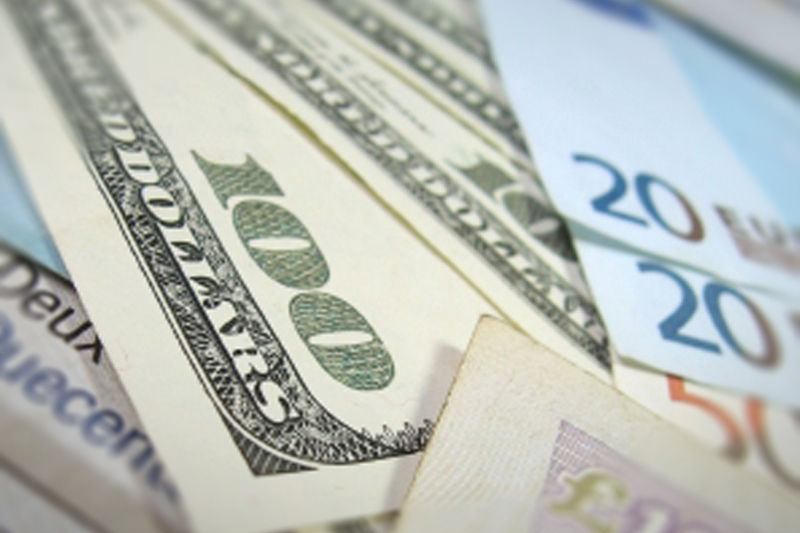Investing.com -- EUR/USD rallied to halt a three-day losing skid, as investors await the start of the Federal Open Market Committee's two-day October meeting beginning on Tuesday.
The currency pair traded in a tight range between 1.1002 and 1.1068, before settling at 1.1056, up 0.0038 or 0.35% on the session. Last week, the euro suffered one of its worst one-day declines on the year after European Central Bank president Mario Draghi provided strong indications that it could cut interest rates and increase the scope of its asset-purchasing program before the end of the year. At one point, the euro slipped below 1.10 against the dollar for the first time since Aug. 11.
EUR/USD likely gained support at 1.0854, the low from Aug. 7 and was met with resistance at 1.1496, the high from Oct. 15.
For the most part, currency traders were hesitant to make any major moves in Monday's session ahead of the FOMC's monetary policy meeting later this week. While the FOMC has hinted that it will likely hold short-term interest rates at its current near-zero level at the meeting, Federal Reserve chair Janet Yellen has still not ruled out a possible rate hike. The FOMC has left its benchmark Federal Funds Rate at its current level between zero and 0.25% for 55 consecutive meetings.
Yellen has indicated that the FOMC will take a "data-driven approach," to its decision as it weighs whether to raise short-term interest rates for the first time in nearly a decade. The U.S. Department of Labor, meanwhile, will release two additional U.S. national employment reports before the FOMC's December meeting providing the Fed with enough data on the state of the U.S. labor market to help guide their decision.
On Thursday, the Commerce Department will release advance estimates for U.S. GDP for the third quarter, one day before it issues a report on Personal Income and Outlays for the month of September. Core PCE inflation, the Fed's preferred gauge for price growth, inched up 0.1 to 1.3% in August. The reading remains far below the Fed's target of 2% for long-term inflation.
Yields on the U.S. 10-Year fell three basis points to 2.06%, while yields on the Germany 10-Year inched down by one basis point to 0.50%. At 156 basis points, the spread between the yields on U.S. and German 10-year government bonds remains near its highest level in more than two decades.
The U.S. Dollar Index, which measures the strength of the greenback versus a basket of six other major currencies, dipped more than 0.25% on the day to close at 96.89. It came amid the release of weak manufacturing data and reports that new home sales in September slumped to their lowest level since last November.
